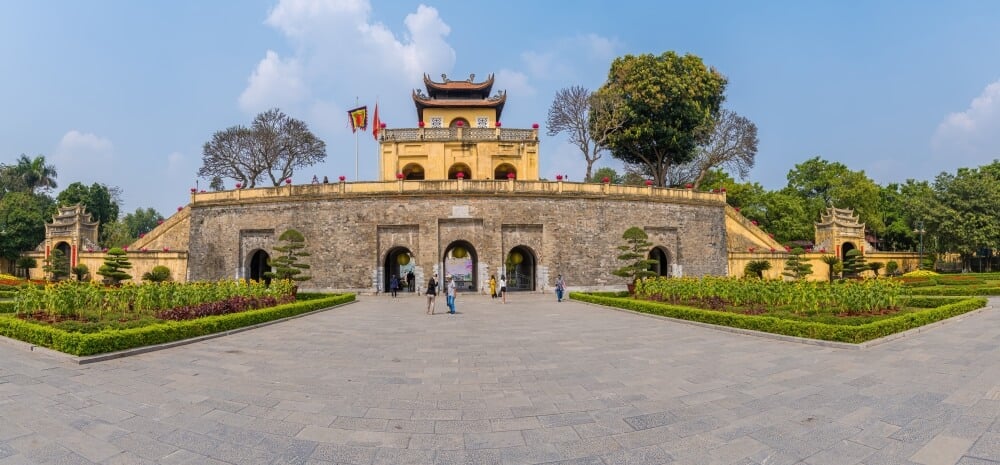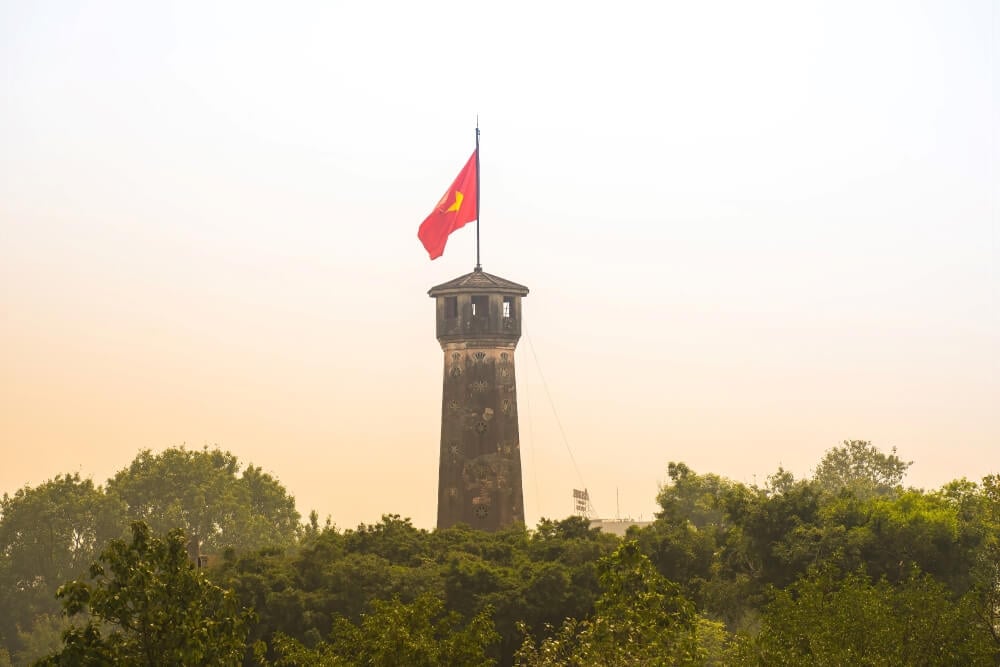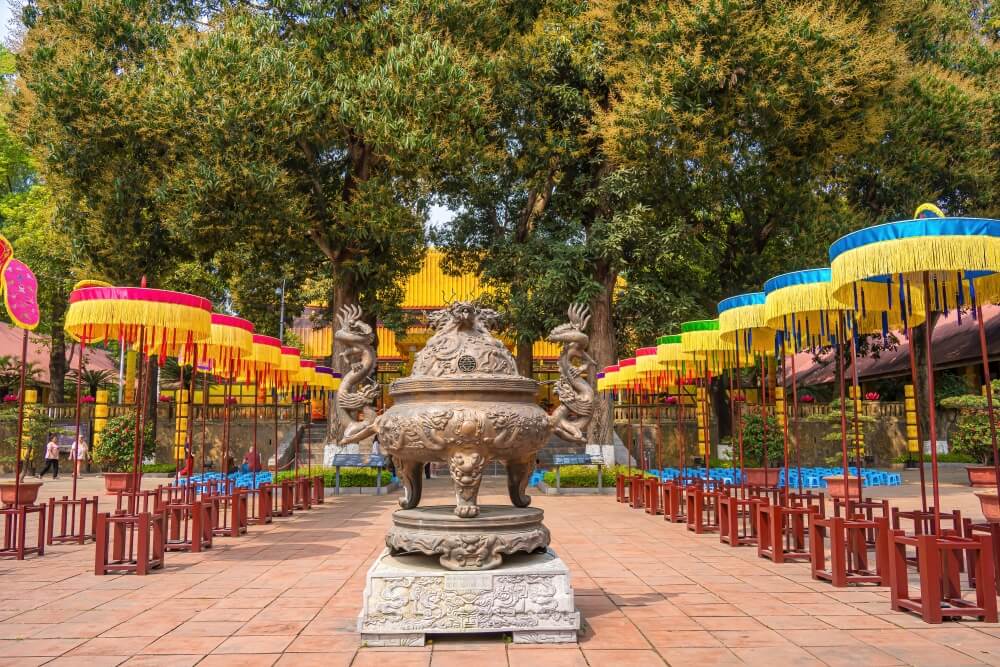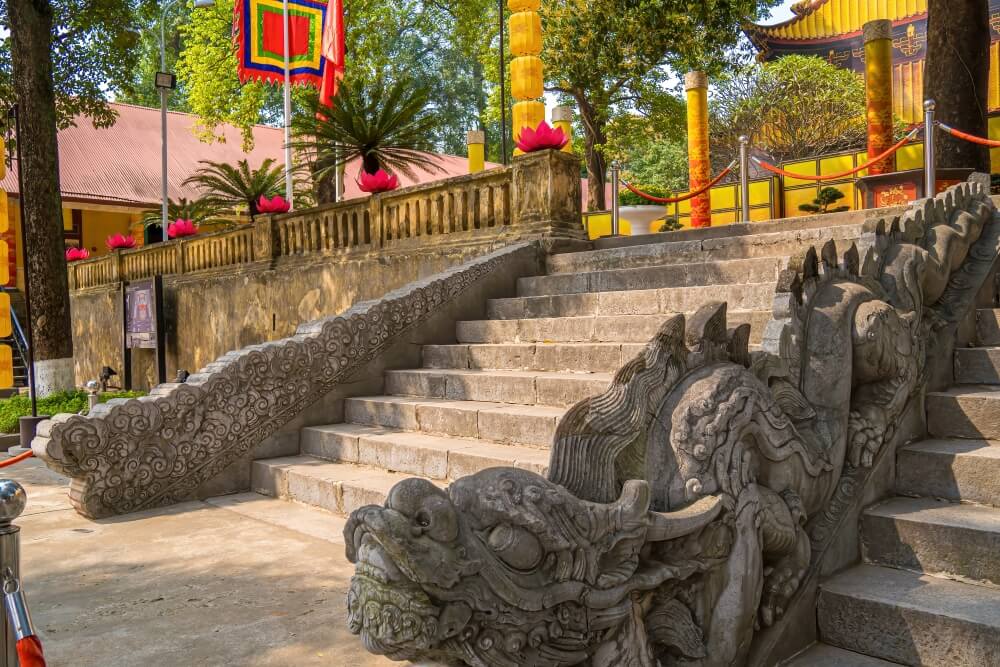Imperial Citadel of Thang Long: Find the Historical Values of Hanoi
The Thang Long Imperial Citadel, with a history spanning over 1,000 years, embodies Vietnam's rich cultural and historical heritage. This iconic site is deeply connected to the nation’s heroic past, standing as a testament to Hanoi's journey from ancient glory to modern prosperity.
1. Explore historical and cultural relics
Indeed, the cultural and historical imprints from over a thousand years ago are always the top value the Thang Long Imperial Citadel relic brings visitors.
The remaining main structures inside the old citadel to visit and learn about include:
1.1. Doan Mon Gate:

This building is one of the main gates leading into this ancient Forbidden City. Many historical documents say it was built in the 15th century under the early Le Dynasty and restored by the Nguyen Dynasty in the 19th century.
Today, this place can be seen as the starting point for exploring the Thang Long Imperial Citadel. It is currently the most magnificent and enormous structure among the remaining buildings.
The existence of Doan Mon Gate has become proper historical evidence. It is intact in terms of scale, architecture, and art for a citadel gate built under the feudal dynasty of Vietnam about 600 years ago.
1.2. Hanoi Flag Tower:

Standing on the second floor of Doan Mon Gate, facing South, you can see the majestic and solid appearance of the Hanoi Flag Tower.
This is one of the few critical structures built in Hanoi in the early years of the 19th century. It marks the starting point at the southernmost point of Thang Long Imperial Citadel.
After many historical changes, Hanoi's flagpole retains its original appearance: steady and majestic, with the red flag with a yellow star containing the national pride of the Vietnamese people.
1.3. Kinh Thien Palace:

This area was formerly where major royal ceremonies were held, ambassadors were received, and the court discussed critical national affairs. That was the glory and active period of this attraction.
The project was built in 1428 under the reign of King Le Thai To. After many events and a long time, only the foundation, along with stone steps and dragons, remains.
Indeed, this place seems unattractive if you do not attach the concept of time and space to it. It simply looks like an old foundation.
But when one considers 600 years ago, a magnificent construction may have existed here. In particular, the two pairs of dragons carved from a single block of stone affirm the unique sculptural art of the ancient Vietnamese.
1.4. D67 Bunker and House:
This relic was built in 1967 and was the secret working headquarters of the Politburo and the Central Military Commission of the Communist Party of Vietnam during the war.
Inside the bunker are the meeting rooms of the Politburo and the Central Military Commission, the offices of General Vo Nguyen Giap and General Van Tien Dung, and a solid basement deep underground, used to hide from bombs and mines.
Inside the D67 building, several images, books, and artifacts are displayed, which are associated with the history of activities and struggles of the Politburo and the Central Military Commission when the headquarters were located here.
1.5. Hau Lau Area:
This building was previously the residence of concubines, queens, and princesses. By the end of the 19th century, the French restored it to its current appearance.
The architecture of the Hau Lau building looks quite strange and mysterious. Although this is a solid building with a massive three-storey scale and a decorated and elaborately carved roof system, from the writer's perspective, the building is almost entirely sealed by thick walls.
The passageways and rooms inside are narrow, dark, and stuffy. The building does not contain the usual marks of a palace; instead, it feels cold and dark, like an isolated palace.
1.6. North Gate:
Also known as Chinh Bac Mon, the main gate North of the Imperial Citadel was built in 1805 under the Nguyen Dynasty, which is the only gate built during this period that still exists today.
You can find the worn traces of time and war still imprinted on it, proof of historical features.
Walking around this relic, you can imagine the solidity and magnificence of the ancient citadel. Today, this ancient citadel gate is like a dotted trace of time remaining, creating a deep color for the picture of vibrant modern life.
2. Providing an exciting view for those who are passionate about archaeology
This historical mark contains archaeology continuously from 1,000 years ago.
In 1010, Ly Cong Uan moved the capital from Hoa Lu in Ninh Binh to this location. The king ordered the construction of the capital here and named it Thang Long.
Since then, Thang Long has always affirmed and maintained its important role and position through many changes from the Ly-Tran-Le-Nguyen dynasties to modern times.
Many excavations and research have occurred at Thang Long Imperial Citadel, and valuable results and relics have been found. You can learn about and admire them in the exhibition areas inside the Imperial Citadel.
In particular, the 18 Hoang Dieu area has a unique archaeological and relic display space on a large ground for visitors to explore and learn directly. Here, many layers of relics stacked on each other were discovered.
Besides, there are many relics collected at this site date from the 7th - 9th centuries, under the Dai La dynasty, and the 9th - 10th centuries, under the Dinh and Tien Le dynasties.
Excavation and research work are still ongoing. We hope to obtain many results soon proving the historical depth of Thang Long Citadel, starting from Dai La Citadel in the 7th century until now.
3. Outstanding with the image of the dragon

The imprint of the dragon image at Thang Long Imperial Citadel has become a unique highlight.
Dragons appear frequently, from the dragon statue carved on a monolithic stone on the steps of Kinh Thien Palace to the reliefs, roof tiles, and decorative images on cups, plates, glasses, and utensils displayed in the exhibition and archaeological area.
Interestingly, the dragon symbol here is somewhat different across different dynasties. For example, the dragon of the Ly Dynasty had a soft, supple body, three claws on its feet, a fiery crest on its head, and no horns.
The dragon of the Tran dynasty began to have horns and was more robust. By the Le dynasty, the dragon had scales, five claws on its feet, a lion nose, and a spear-shaped tail.
The frequent appearance of the dragon symbol further affirms the prosperity and power of Thang Long's ancient capital.
The writer is always attracted by the many dragon symbols here. Each relief and carving contains a sophisticated artistic value and reflects ancient artisans' skill and ingenuity. But also includes the soul of the Vietnamese people through each dynasty.
Spending time with the dragon symbol at this destination will help you realize its hidden artistic, cultural, and ideological values.
In addition, because of its vast area and green trees, Thang Long Imperial Citadel can provide a fresh, spacious atmosphere. In the middle of the bustling Hanoi City Center, the ample green space at the Imperial Citadel becomes extremely wonderful and precious.
Visiting and learning about the historical and cultural values here will help you develop a realistic view of history and humanity's development process. It will also enrich your knowledge of the history of different cultures worldwide.
-
Allowed to take pictures
-
Parking Section
-
History & Culture
